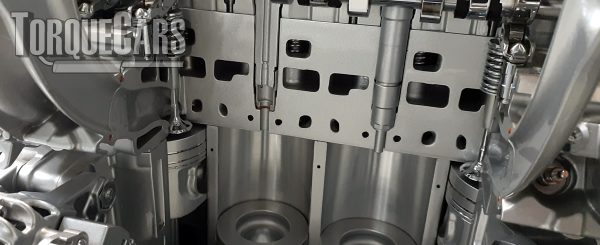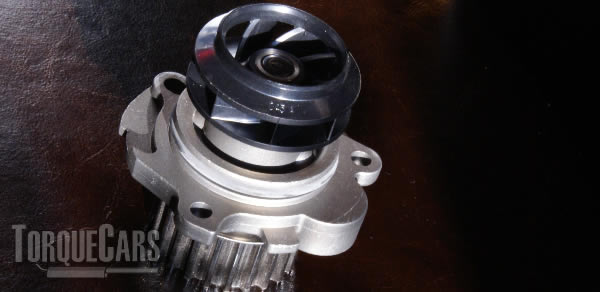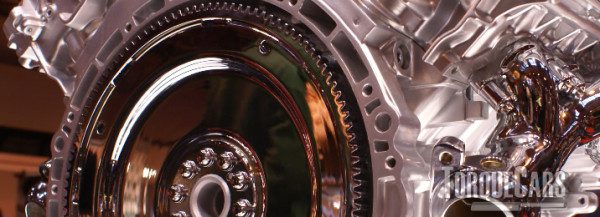Common VW 2.5 TDI PD Problems & Issues
VW 2.5 TDI PD Diesel (T5 Transporter R32 Campervan Version)
"All you need to know about common problems & issues on the 2.5 TDi"
The 2.5 TDI engine has earned a reputation for being a reliable and dependable powerplant in various vehicles. It offers a balance of power and responsiveness, making it a popular choice among drivers.
The 2.5 TDI engine is known for its durability and long lifespan when properly maintained.
Many owners have enjoyed trouble-free operation for extended periods, making it a reliable choice for those who depend on their T5 Transporter but there are a few well documented problems to be on the look out for.
Watch our video guide to VW 2.5 TDI common problems and be sure to subscribe and support my new channel.
This engine offers good power and response, making it suitable for various driving conditions. It can provide ample torque, especially in the lower RPM range, which is valuable for tasks like towing or carrying heavy loads.
While the 2.5 TDI is dependable, it's worth noting that these diesel engines can be more expensive to repair when issues arise.
Therefore, regular maintenance and prompt attention to any warning signs are crucial to avoid costly repairs.
Differences between the early T5 2.5 TDi engines and the facelifted T5.1, highlighting the areas of complexity, reliability, and repair costs.
Early T5 2.5 TDi vs. T5.1 2010 Facelift:
Complexity:
- Early T5 PD 2.5s were simpler in design. They featured a more straightforward VE engine and fewer advanced technologies & emissions control systems.
Compared to the T5 & T5.1 versions many consider these VE engines better in many respects. - The later PD T5 version aimed to improve reliability but seemed to suffer a few issues but are still loved and greatly respected.
The T5.1 introduced more complexity and emissions control technologies to meet stricter environmental standards and is better than the earlier iteration in terms of reliability.
2.5 TDi vs the 1.9 TDi: Engine Comparison:
- It's worth noting that the 1.9 TDi engine, often used in earlier VW Transporters, was known for its simplicity and robustness. Many owners appreciated its reliability and relatively low repair costs.
- In contrast, the 2.5 TDi engines, both in early T5 and T5.1, were more powerful and suitable for heavier loads, but this came at the expense of increased complexity and potentially higher maintenance costs and allegations of more issues & problems.
So while the T5.1 introduced advancements and additional power, it also brought added complexity and potential reliability issues compared to the earlier T5 2.5 TDi engines.
Driver abuse, commonly silly things like depressing the clutch when stationary kills the DMF & pulling away like a race driver all the time does affect the driveshafts, it is pulling quite a lot of weight.
Exhaust Pressure Sensor
The Exhaust DPF (Diesel Particulate Filter) pressure sensor is a component that plays a crucial role in the proper functioning of a vehicle's emissions control system telling the ECU when a regeneration of the DPF is required.
However, it's not uncommon for issues to arise in connection with this sensor, often tied to problems with the ECU (Engine Control Unit) flashing or engine tuning maps.
When the ECU maps are not correctly calibrated, it can lead to problems in the DPF system, primarily due to soot build up. unburnt fuel and excessive heat, causing the DPF pressure sensor to trigger an engine warning light.

This is a relatively common problem encountered by vehicle owners, particularly those who have opted for aftermarket ECU flashing or remapping services.
When this sensor detects an issue, the engine light is illuminated to alert the driver.
Attempting to clean a malfunctioning DPF pressure sensor is generally not recommended due to the sensor's sensitivity.
These sensors are designed to measure the pressure within the DPF accurately, and any cleaning attempts may inadvertently damage them further.
Cleaning can cause a loss of precision in pressure readings, potentially leading to incorrect data being fed to the ECU. Instead of attempting to clean the sensor, it's advisable to address the root cause of the problem, which often involves rectifying the ECU mapping or engine tuning issue.
Resolving the ECU flashing maps problem will likely lead to the correct functioning of the DPF pressure sensor and prevent the engine light from coming on in the first place.
This, in turn, ensures the vehicle's emissions control system operates as intended, reducing environmental impact and maintaining engine efficiency.
Faulty Injectors.
Faulty injectors can be a significant concern in diesel engines, including the 2.5 TDI engine due to the high pressures they are dealing with.
When injectors develop problems, it can lead to various issues that affect engine performance and efficiency.

When injectors are faulty, you may notice symptoms such as poor engine performance, reduced power, increased fuel consumption, rough idling, and even excessive smoke from the exhaust.
These issues are often indicators that the injectors are not delivering fuel properly.
Faulty injectors can result from various factors, including wear and tear, contamination from poor-quality fuel, and clogging due to carbon deposits.
Over time, the precise spray pattern and fuel delivery capability of the injectors can degrade.
Repairing or replacing injectors is often necessary to resolve these issues. This can be a relatively costly repair, as it involves labor to access and replace the injectors. With some in pretty hard to reach regions of the 2,5 TDi engine bay.
Timely maintenance and using high-quality fuel can help prevent injector problems.
Camshaft & Cam Follower
Note the cam is gear driven rather than a belt on the early VE engines.
Camshaft and cam follower issues can be a common concern in certain vehicle engines, often stemming from various factors, including wear and tear, maintenance, and oil quality.
These problems can manifest with noticeable symptoms, such as engine performance decline and abnormal engine sounds. When dealing with these issues, it's important to understand the underlying causes and the best ways to address them.

Camshaft and cam follower problems often manifest as issues with the engine's performance. The camshaft is a crucial component that controls the opening and closing of the engine's valves, and the cam follower, sometimes referred to as a tappet, is responsible for transmitting this motion to the valves.
When these components wear down or encounter issues, it can lead to irregular valve operation, affecting engine power and efficiency.
Common symptoms of these problems include reduced engine performance, misfires, and rough idling. When such symptoms occur, it's essential to diagnose the issue promptly to prevent further damage to the engine.
Addressing camshaft and cam follower issues is crucial for maintaining your vehicle's engine health.
If you suspect problems, it's advisable not to attempt DIY repairs unless you have the necessary expertise. The complexity of engine internals and precise timing requirements make these repairs best left to professionals.
A mechanic can assess the extent of damage, determine whether replacement or repair is necessary, and ensure that the components are correctly aligned and functioning. Regular maintenance and using high-quality engine oil can help extend the life of these components and reduce the likelihood of problems arising in the first place.
EGR Valve Problems
Engine management light issues are a common concern for vehicle owners, and one potential cause is related to the EGR (Exhaust Gas Recirculation) system, particularly when dealing with EGR valve blockages or contamination.
- EGR Valve Blockages: The EGR system is designed to recirculate a portion of exhaust gases back into the engine's intake manifold. This process helps reduce nitrogen oxide (NOx) emissions. Over time, carbon deposits and soot can accumulate in the EGR valve and its associated passages. This buildup can lead to blockages, preventing the valve from functioning correctly. When the EGR valve is blocked or partially blocked, it can trigger the engine management light, as it affects the engine's performance and emissions.
- Sticky or Dirty EGR Valve: The EGR valve can also become sticky or contaminated with carbon and oil residue. This can result in the valve not opening or closing as it should, disrupting the correct balance of air and exhaust gas in the engine. When the EGR valve is not functioning correctly due to being sticky or dirty, it can lead to power loss, increased emissions, and a potential engine management light warning.
To address these issues, cleaning or replacing the EGR valve and associated components may be necessary.
Regular maintenance can help prevent excessive carbon buildup in the EGR system.
If the engine management light is triggered due to EGR-related problems, it's advisable to have the issue diagnosed by a qualified mechanic who can perform the necessary cleaning, repairs, or replacements to restore proper engine performance and emissions control.
Water Pump Failures
Water pump failures can be a troublesome issue in vehicles, leading to several consequential problems that need attention.
One of the primary concerns with a failed water pump is the potential for coolant to mix with engine oil.
This can have a cascading effect, causing damage to other critical components, particularly the turbocharger.

This issue can often be addressed through a recall, focusing on the seal of the oil cooler. The recall is designed to fix the problem, ensuring that coolant doesn't infiltrate the engine oil and harm other engine parts.
Keeping an eye out for any signs of coolant mixing with oil, like a milky appearance often referred to as "mayonnaise," is essential, as it can be an early indicator of this problem.
Water pump seal and bearing issues are not uncommon in vehicle maintenance. One notable aspect of these failures is the presence of a metal impeller in some water pumps.
Over time, this impeller can become porous, and in certain cases, it may crack, allowing water to escape into the sump.
This can lead to overheating and potential damage to the engine. It's advisable to replace the water pump and its associated components every 60,000 miles or at the manufacturer's recommended interval to prevent these issues from arising.
In cases of overheating, another significant concern is the potential damage to head gaskets. Overheating can cause these gaskets to fail, leading to coolant and oil mixing, which is detrimental to engine function. To prevent such issues, maintaining the cooling system and addressing any overheating promptly is crucial.
Regular inspections of the engine oil for signs of "mayonnaise" can serve as an early warning, prompting action before more significant damage occurs. It's important to keep these factors in mind for proper vehicle maintenance and to ensure the longevity and reliability of your vehicle's engine.
Exhaust Manifold Cracking
Exhaust manifold cracks are a common issue in vehicle exhaust systems and can lead to a variety of problems if not addressed.
The exhaust manifold is responsible for collecting exhaust gases from the engine's cylinders and directing them into the exhaust system.
When it develops cracks, it can impact engine performance, fuel efficiency, and even create safety concerns due to exhaust leaks.
Symptoms of a cracked exhaust manifold include a noticeable increase in engine noise, reduced engine performance, and in some cases, a hissing or ticking sound near the engine.
These cracks can also allow exhaust gases to escape before they reach the catalytic converter, which can affect emissions and trigger a check engine light.
Welding is a common method for repairing exhaust manifold cracks. A skilled welder can effectively mend the cracks, restoring the manifold's integrity.
However, it's important to note that not all exhaust manifold cracks can be safely repaired through welding. If the cracks are extensive or in critical areas, replacement of the manifold may be the best solution.
Regular maintenance and inspections of your vehicle's exhaust system can help catch exhaust manifold issues early, preventing them from becoming more severe and costly problems.
Addressing cracks promptly through welding or replacement is essential to maintain engine performance and minimize environmental impact.
DMF Problems
The issue of Dual Mass Flywheel (DMF) problems, such as rattles, vibrations, and judders, is a common concern in vehicles, particularly those with manual transmissions.
The DMF is a component that plays a crucial role in dampening vibrations and ensuring smooth power delivery from the engine to the transmission.
When a DMF develops problems like rattling, vibrations, or juddering, it can significantly impact the driving experience.

These issues are often indicative of wear and deterioration in the DMF, which can result from the stresses and strains placed on it during regular use. If left unaddressed, these problems can worsen and lead to more severe transmission and engine issues.
One significant consideration when dealing with DMF problems is the cost of repair. Replacing a DMF can be a relatively costly procedure because it involves dropping the engine or separating the transmission from the engine to access the DMF.
This labor-intensive process can make the repair more expensive compared to some other vehicle maintenance tasks. However, it's essential to address DMF issues promptly to prevent further damage and ensure a smoother and safer driving experience.
Drive shaft failure
Drive shaft failure is a common problem in vehicles and can be caused by various factors.
You'll notice noises and knocks far before it completely fails, as the teeth tend to strip one by one.
The drive shaft is a critical component responsible for transmitting power from the transmission to the wheels.
When it fails, it can lead to a loss of power and control, creating a potentially hazardous situation. Two common causes of drive shaft failure are spline wear and rust-related issues:
- Spline Wear: The drive shaft is often splined, meaning it connects to the stub shaft from the gearbox using interlocking teeth. Over time, these splines can wear down due to the constant movement and torque load. This can result in a loose connection between the drive shaft and the gearbox, leading to power loss and vibrations. Proper maintenance and lubrication of these splines can help prevent premature wear and ensure a secure connection.
- Rust and Corrosion: Drive shafts are exposed to the elements and road debris, making them susceptible to rust and corrosion. When moisture and other contaminants enter the drive shaft's splined area, they can lead to rust buildup. Rust can weaken the shaft and its connections, eventually causing failure. Regular inspections and protective measures, such as ensuring proper sealing and corrosion-resistant coatings, can help mitigate this issue.
Addressing drive shaft problems typically involves replacing the damaged component with a new or refurbished one.
Timely maintenance and inspections are essential to catch these issues before they lead to more extensive and costly damage.
Proper lubrication, protection from rust, and attention to any unusual noises or vibrations can go a long way in preventing drive shaft failures and ensuring safe and reliable vehicle operation.
Other Issues to watch out for.
he Mass Airflow (MAF) sensor, N75 valve, and the catalyst, also known as the catalytic converter, can all be potential culprits for a loss of power in a vehicle. Understanding how each of these components works and how they can lead to a power loss is essential for diagnosing and addressing performance issues in a vehicle.
- MAF Sensor (Mass Airflow Sensor): The MAF sensor measures the amount of air entering the engine. This information is crucial for the engine control unit (ECU) to calculate the appropriate air-fuel mixture. If the MAF sensor is faulty or dirty, it can provide inaccurate data to the ECU, leading to a lean or rich fuel mixture, both of which can result in reduced engine power and efficiency.
- N75 Valve (Boost Control Solenoid): The N75 valve controls the wastegate actuator, which manages turbo boost pressure. If the N75 valve is malfunctioning, it can affect the turbocharger's performance, leading to either too little or too much boost. Inconsistent or improper boost levels can result in a noticeable loss of power and decreased engine efficiency.
- Catalyst (Catalytic Converter): The catalytic converter is part of the exhaust system and serves to reduce harmful emissions by converting pollutants into less harmful gases. When a catalytic converter becomes clogged or fails, it can restrict the flow of exhaust gases, creating backpressure that hampers engine performance. A faulty catalyst can lead to power loss, reduced fuel efficiency, and even trigger warning lights on the dashboard.
Addressing these issues often involves diagnostic testing by a qualified mechanic using specialized equipment.
They can identify the specific problem and recommend repairs or replacements as necessary. Timely maintenance and regular inspections can help prevent these components from causing power loss, ensuring your vehicle runs at its best.
Please let us know in the comments if we have missed any problems, or potential solutions. I really want to make this the best guide around and appreciate your continued support and feedback.
Please Check out my YouTube channel, we're regularly adding new content...
PLEASE HELP: I NEED YOUR DONATIONS TO COVER THE COSTS OF RUNNING THIS SITE AND KEEP IT RUNNING. I do not charge you to access this website and it saves most TorqueCars readers $100's each year - but we are NON PROFIT and not even covering our costs. To keep us running PLEASE Donate here
If you liked this page please share it with your friends, drop a link to it in your favourite forum or use the bookmarking options to save it to your social media profile.
Feedback - What do You Think?
Please use our forums if you wish to ask a tuning question, and please note we do not sell parts or services, we are just an online magazine.
Help us improve, leave a suggestion or tip
Please watch this video and subscribe to my YouTube channel.

 Click to accept YouTube Cookies & Play.
Click to accept YouTube Cookies & Play.